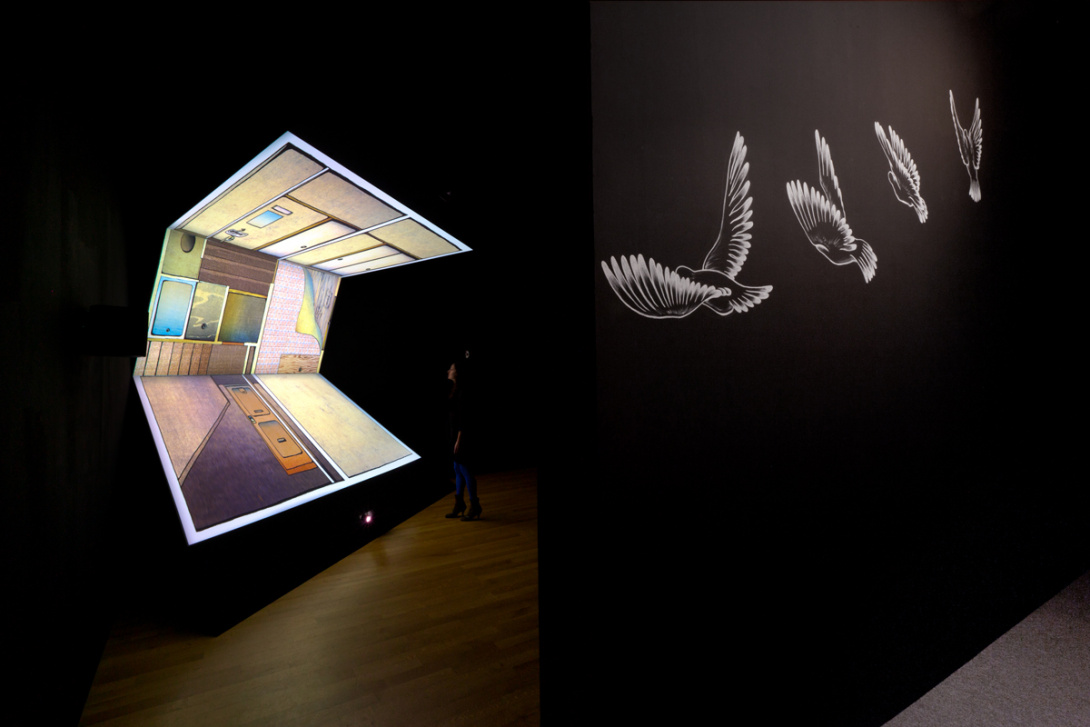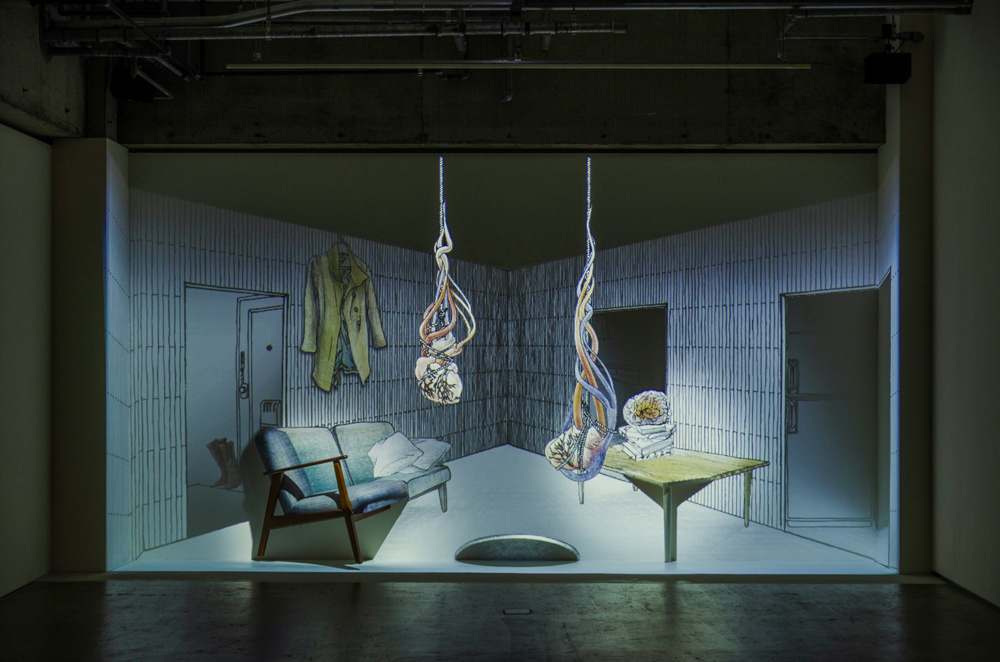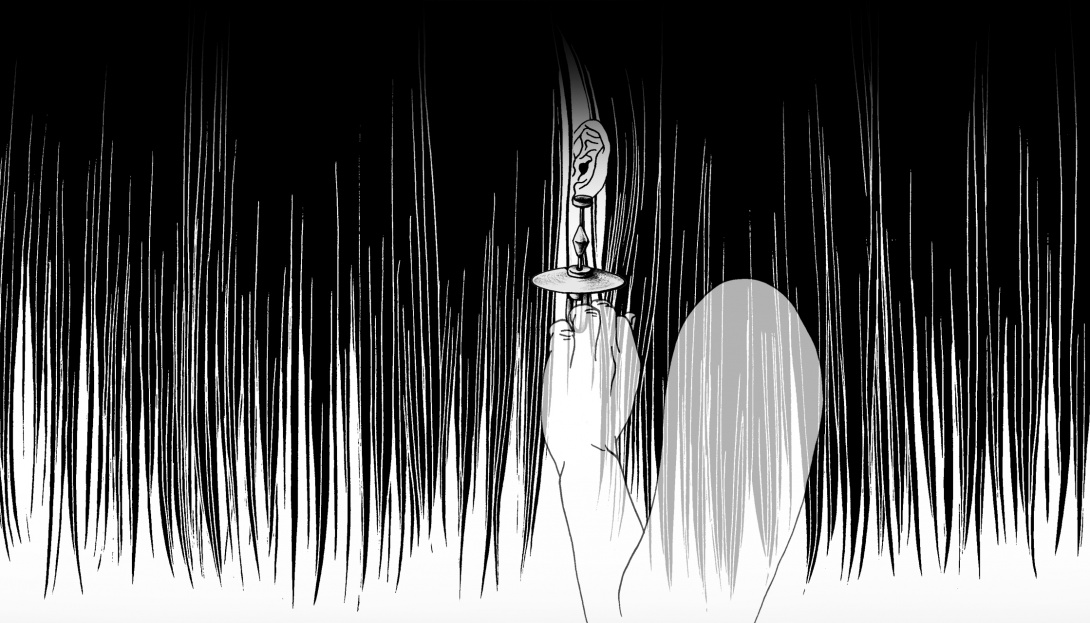Imagine these ever-changing environments: Apartment buildings open to reveal the very private and sometimes strange lives of their occupants; behind a curtain of long, flowing dark hair, arteries feed blood to a pulsating heart and a throbbing brain slips off the edge of a table; a hanging lamp morphs into a full moon, which morphs into a manhole that swallows the contents of the room.
Tabaimo dissolves the ordinary, material world and blurs the distinction between reality and make-believe. In her magical, room-size animations, she probes the fantastical depths of the unconscious and gives shape to the uncertainties that can haunt contemporary experience. By projecting her uncanny images onto complex architectural configurations, Tabaimo envelops viewers in her seductive installations and casts us into her outsized visualizations of one’s innermost fears and feelings. These works mirror her insight into the challenges faced by Japan’s so-called “lost” generation, caught in the struggle to negotiate its place between tradition and modernity, isolationism and globalism, the real and virtual worlds.
Tabaimo: Her Room is the first major museum exhibition in the United States of the work of this world-renowned Japanese artist. It features three video animations, two of which have never before been seen in the US, as well as eighteen scroll-like ink drawings. Tabaimo will further explore her interest in transforming space in new, site-specific wall drawings made exclusively for this exhibition.
Tabaimo’s imagery—based on thousands of drawings made with an automatic brush pen—specifically recalls well-known Edo-period (1603–1868) ukiyo-e prints. Using Photoshop, she samples her colors directly from reproductions of these prints. Yet Tabaimo’s style is very much a 21st-century hybrid: she blends tradition with oblique references to popular visual culture, including Japanese comics (manga) and animation (anime). Most recently, Tabaimo also culls from historical Japanese narrative traditions like puppet theater and from contemporary noir fiction.
This exhibition is the third in SJMA’s series “New Stories from the Edge of Asia,” which features work by artists from Pacific Rim countries and cultures who push the boundaries of narrative using experimental animation, video, film, gaming, and interactive technologies.
New Stories from the Edge of Asia / Tabaimo: Her Room is sponsored by the Richard A. Karp Charitable Foundation, Applied Materials Foundation, the Myra Reinhard Family Foundation, the Japan-U.S. Friendship Commission, and Tad and Jackson Freese.
The exhibition is made possible also by the support of the Japan Foundation, the E. Rhodes and Leona B. Carpenter Foundation, Lucia Cha and Dr. Jerrold Hiura, Olivia Padeken-Kenolio and David Kenolio, and the Consulate of Japan in San Francisco. In-kind support for equipment is provided by James Cohan, New York, NEC Display Solutions, and Genelec.
Exhibition Booklet
Press
Pizarro: San Jose Museum of Art showcasing global, local artists, Mercury News
March 18, 2016
Projectors bring Japanese artist's vision to life, Digital Signage Today
July 15, 2016








